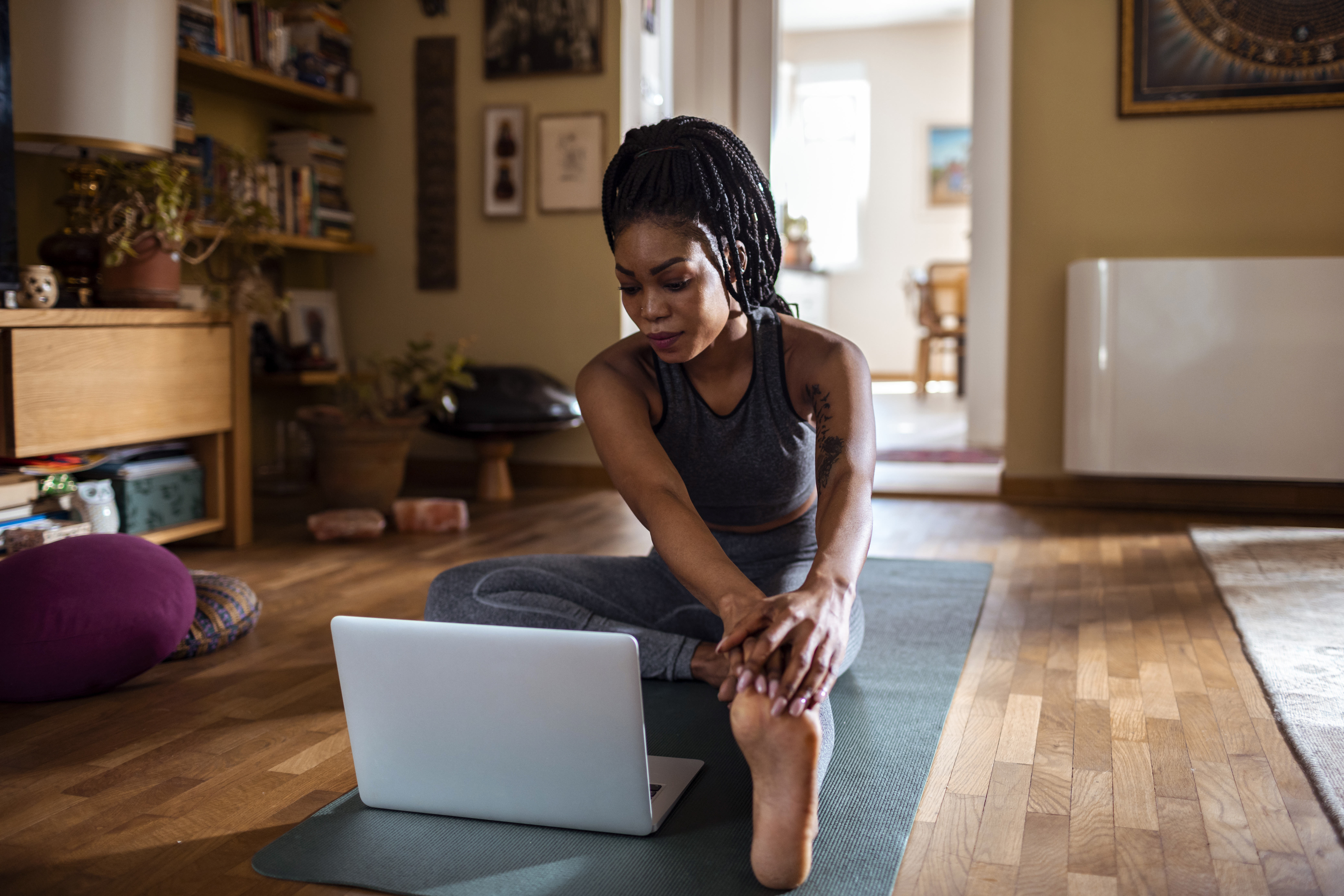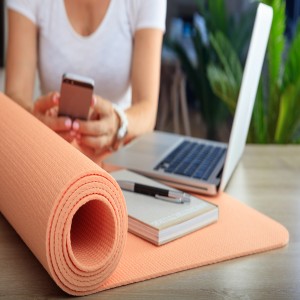Imagine you are training for a marathon.
You have a schedule of workouts stretched out in front of you, weeks of activity to prepare for your race. You’ve planned for several long runs and many interval workouts, but you have to pace yourself: it’s not good for your muscles to do too much. You need to recover--your muscles become stronger and more resilient when you give them a chance to reset. With this in mind, you’ve made sure to prioritize your days off because the last thing you want is to arrive on race day, burned out.
Now, imagine taking this same approach but as an educator, planning for the upcoming semester. Anticipating the hard days, but building in rest. Prioritizing short-term self-care--moments that support your mental, emotional, and physical health--in order to ensure your long-term well-being.
Teaching isn’t your typical profession. It requires steadfast resilience and an enormous amount of daily mental, emotional, and physical effort. And teaching during a pandemic isn’t typical, either. Apply the same analogy above--training for a race--and throw in random, wildly ridiculous obstacles along the way. Arguably, educators planning for another semester amidst COVID cases are gearing up for a steeplechase/marathon combo.
There are no easy solutions, especially given that educators are facing the intense dilemma of in-school education vs remote instruction/hybrid classrooms for the upcoming year. On one end, the American Academy of Pediatrics (AAP) says that schools need to open. The AAP points out the critical role schools play, not only in supporting the very development of children and adolescents but also in addressing social and racial inequities.
However, that’s not the whole picture. Patti West-Smith, a Senior Manager on the Turnitin Teaching and Learning Innovations team, as well as a former educator and administrator, shares:
“[Students] are not the only people in those buildings or on buses. If only a few of the adults get sick, the wheels fall off because you're then dependent upon substitutes, made up almost entirely of retired individuals who will be at much higher risk, not to mention that the vast majority of administrators are 50+. Even a flu season can shut down a school building… AND that doesn't even consider the fact that trying to follow the guidelines for safe reopening will cost untold millions (billions?) of dollars. I'm not saying we shouldn't do it, but I don't think we can ignore other aspects of the situation."
Suffice it to say, educators truly want to be with their students, in-person and in the classroom, in order to provide the highest quality instruction. But as we approach a new semester, there needs to be a balance between teachers’ well-being and the well-being of students, families, and communities.
With all of the differing perspectives on how to educate students safely and effectively, while also ensuring everyone is healthy and supported, the resilience and well-being of our educators becomes more important than ever. They are on the front lines of teaching in-person and online, and they are shepherding this generation of students into the next phase of global education.
So, how can educators prioritize self-care in a COVID world? Here are three ways teachers, whether planning for in-person or remote instruction, can build in time for themselves.
Set a schedule.Don’t waste another moment: sit down in front of a calendar and plan as you’ve never planned before. Assess your upcoming tasks, classes, and to-dos, and take charge of your own time, which will allow you to be more present throughout your week. Teaching during a pandemic requires an enormous amount of planning because there are so many unknowns. By taking control of what you can--your schedule--you give yourself the opportunity to deal with uncertainty from a position of strength.
It’s helpful to write down all of your action items, including your prioritized self-care tasks because it helps you to stay organized and hold yourself accountable. Try grouping related tasks together, so instead of replying to one email at a time, for example, you can block off a set time in your schedule to answer all new messages at once. Be sure to scrutinize your calendar, as well: are there things that can be eliminated? Where might you need extra support? Is there any additional time you can carve out for yourself? A well-planned week can feel more manageable and less stressful, allowing you to truly take care of yourself while handling any unexpected curveballs with resilience.
Set boundaries.Chances are if you work from home, separating your work-self from your life-self feels nearly impossible. Lines are blurred and work/home tasks can blend together, which quickly starts to feel overwhelming. Similarly, when teaching in a classroom, it can often feel like there are no limits to the access that others have to your time.
And because of this, caring professions--like teaching--see severe burnout rates; according to THE Journal, teaching "has the highest burnout rate of any public service job.” Setting professional limits protects your energy and attention in order to maximize their effects, which means being clear with others where you draw your lines and why.
- If you work from home, set aside a specific workspace, so your work and relaxation time are separate, says Dr. Jackson-Spence. And if possible, snag much-needed vitamin D by working near a window, which can boost your mood and keep you feeling awake and focused.
- Take a non-negotiable break for yourself. It’s easy to get lost in all you have to do. Find time for yourself in your day, whether it’ s at home or at school, and force yourself to step away momentarily, breathe, and reset. Turning off your tech, too, gives your eyes and your brain an essential reset. The American Academy of Ophthalmology recommends following the 20-20-20 rule to reduce eye strain: Every 20 minutes, look at something 20 feet away for at least 20 seconds.
- Social distancing in a physical classroom can be challenging, especially for younger students. Try setting up hula-hoops for each student and make a rule that they mustn’t invade others’ “healthy hoop space”. Mark an “x” on the floor an appropriate distance from your desk where students must stand if they have an individual question for you. And even if you are in a physical classroom, you can still require that all assignments be turned in digitally, so you aren’t putting yourself in danger of handling stacks of papers from students. Online submissions also mean grading can be done away from school and in the safety of your own home.
- Say no. You have a right to protect your time and your energy, especially during a pandemic, when educators around the world are already feeling overwhelmed. Communicate your needs clearly to administrators and colleagues--who may be able to work with you to establish pandemic-specific, school-wide policies--as well as to your students and their families.
It may sound simple, but it’s truly necessary. We all need time away from our computers, centered in calm. And even if you live in a big city, urban green spaces or parks--no matter how small--still provide essential elements of nature.
An empirical study out of British Columbia found that virtually any form of immersion in the natural world heightens overall well-being and results in more positive engagement with the larger human community. By literally stopping to smell the roses, we become truly present, “[which] allows for greater inner calm, clearer judgment, and it enables more focused, creative responses to everyday life.”
- When teaching remotely--if your Wifi allows it!--conduct a digital class outside; you can even encourage your students to “attend” outdoors so that everyone shares in that experience.
- For in-person instruction, take advantage of good weather by planning outdoor activities, which will effectively limit the too-close-for-comfort interactions in your classroom. Students of every age appreciate a change in scenery-- small-group discussions or 30-minute reading and journaling sessions-- will work wonders on your mood and the energy of your students.
- Outdoor Classroom Day has a wide variety of ideas for primary and secondary educators who are interested in getting back to nature and can serve as helpful suggestions for parents and caretakers who are seeking activity suggestions.
Running a marathon is easy compared to teaching in this COVID world. Our current educational climate is demanding more from already depleted instructors, which is why self-care is more essential than ever before. And while we cannot predict what storms lay ahead, let us all plan to take the time we need--and deserve--to take care of ourselves today.






